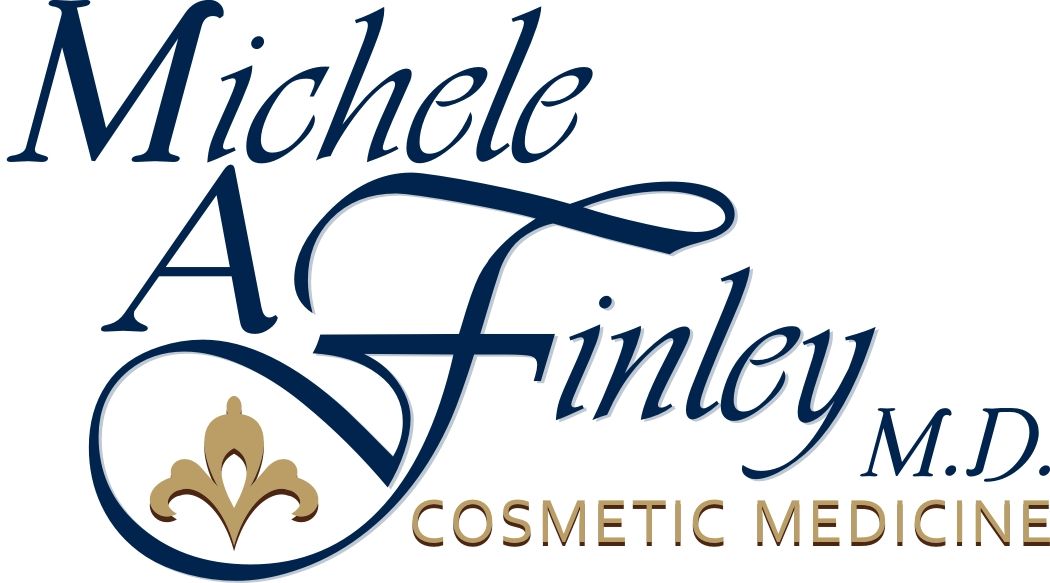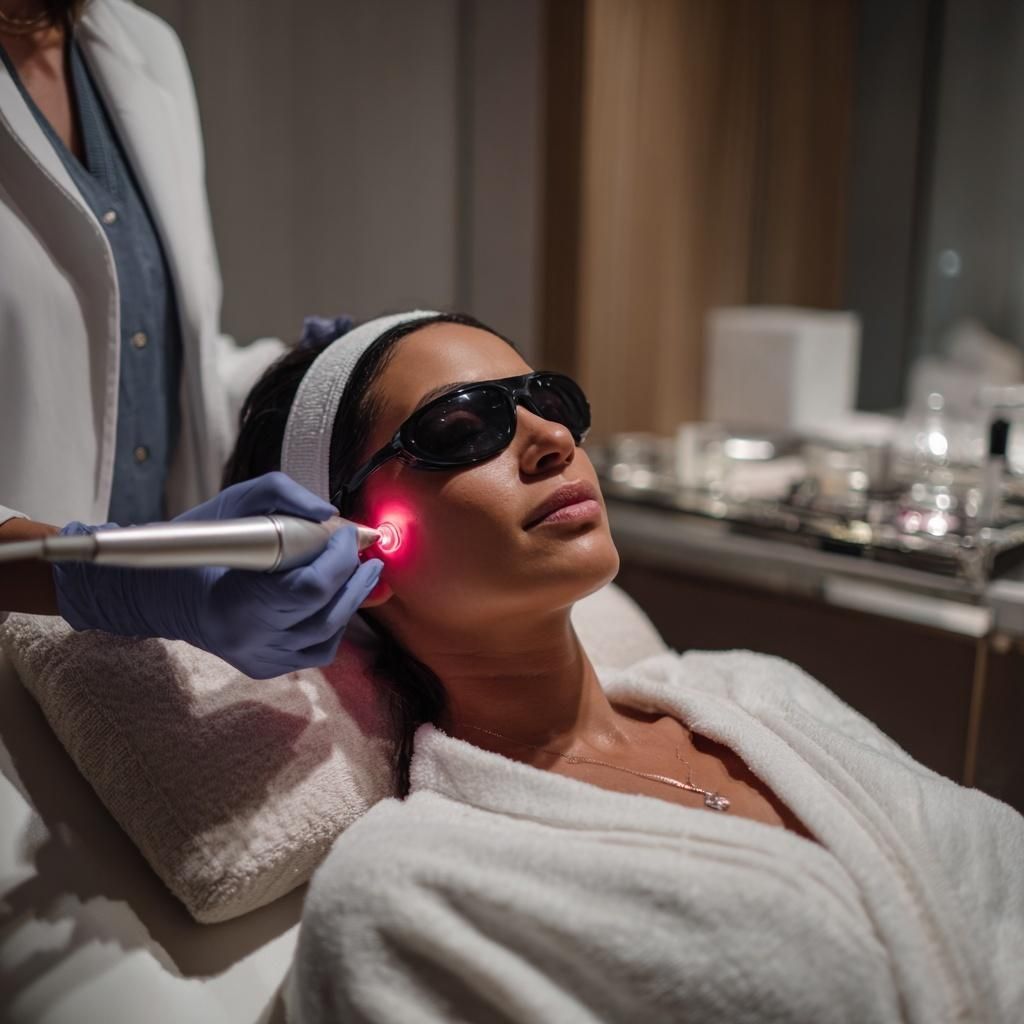
You finally cleared your acne, but now you’re left with something just as frustrating; acne scars. Whether it’s pitted marks, dark spots, or uneven skin texture, the aftermath of breakouts can linger long after the inflammation is gone. And if you're tired of hiding behind makeup or filters, you're definitely not the only one.
The upside? There are solutions. At Michele Finley Cosmetic Medicine in Carmel, IN, we offer advanced laser treatments designed to smooth out acne scars and bring back your skin’s natural glow; no surgery needed.
In this article, you'll learn what causes acne scars, how laser treatments work, what types of scars respond best, and what to expect during and after the procedure. Let’s get into it.
Understanding Acne Scars: What Causes Them and Why They Stick Around
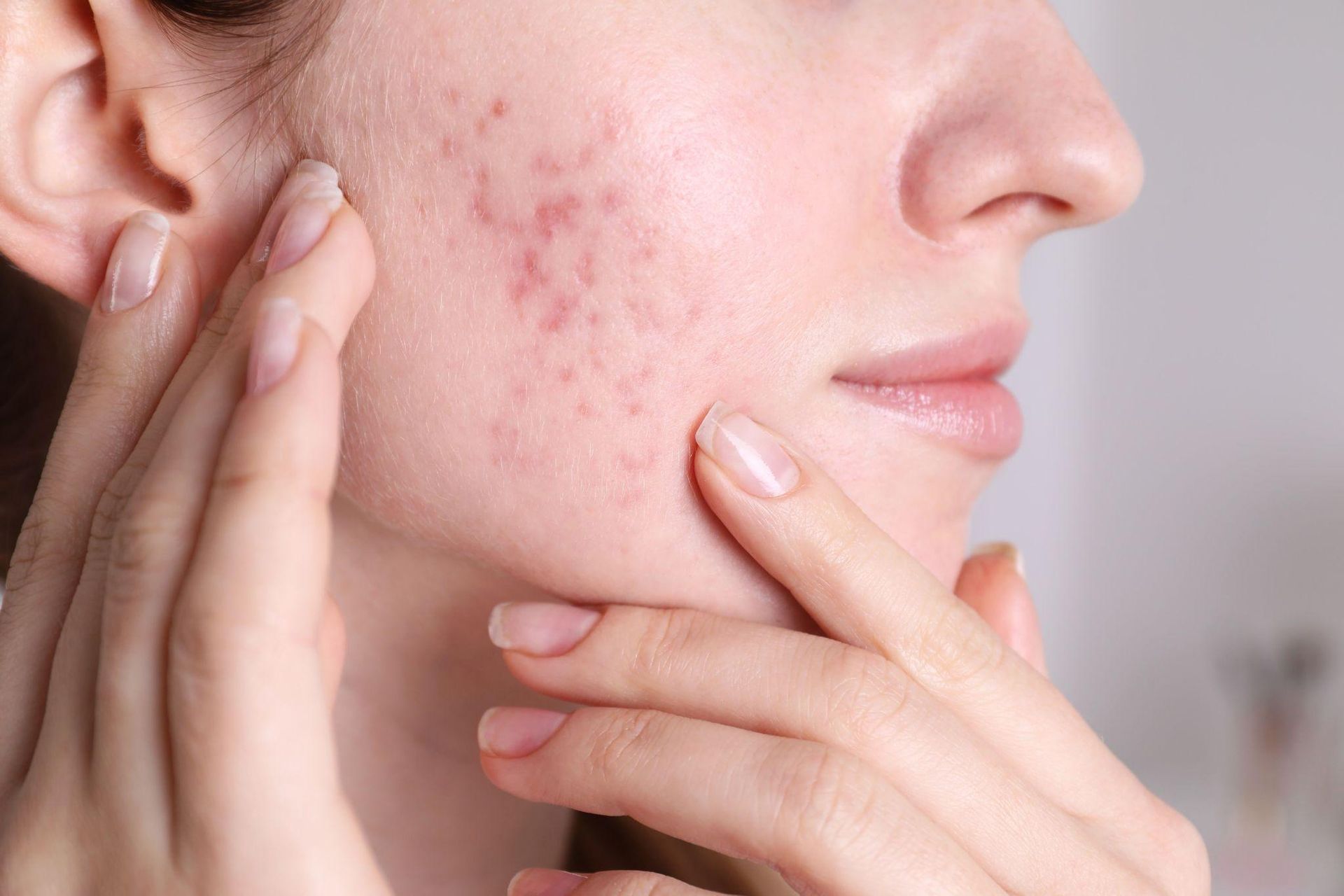
Before exploring treatment options, it's important to understand why acne scars form and why they can be so stubborn. Knowing the science behind scarring can help you make more informed decisions about what treatments will work best for your skin. Let’s break it down.
How Acne Scars Develop
Acne scars form when inflamed acne lesions damage the deeper layers of the skin. Your body produces collagen to repair this damage, but if too little or too much collagen is made, a scar develops. This process can leave behind raised or depressed acne scars depending on the severity of the inflammation and your skin’s natural healing response.
In some cases, the scars are barely noticeable. But for many people, acne scars create textural changes or discoloration that persist for years. The more severe the acne, especially cystic or nodular acne, the more likely permanent scarring is to develop.
You can also make scarring worse by picking at blemishes or squeezing pimples. This disrupts the healing process and increases inflammation. Understanding how scars develop helps us design a better acne scar treatment plan that gets to the root of the issue.
Types of Acne Scars
There are several different types of acne scars, and identifying the correct scar type is key to choosing the best laser treatment.
Here’s a breakdown of the most common types:
| Scar Type | Description |
|---|---|
| Rolling scars | Broad depressions with sloping edges, often caused by long-term inflammation |
| Boxcar scars | Defined edges and crater-like appearance, typically deeper than rolling scars |
| Ice pick scars | Small, deep holes that extend into the dermis, the most difficult to treat |
| Hypertrophic scars | Raised, thickened scars caused by excess collagen during healing |
| Keloids | Similar to hypertrophic scars but grow beyond the original wound area |
Each type of acne scar affects the skin differently. For example, rolling scars affect the skin texture more broadly, while ice pick scars appear as small but deep indentations. This is why the type of laser used for acne scar treatment must be carefully matched to the type of scarring.
How Laser Treatment Works to Reduce Acne Scars
Laser treatment for acne scars works by creating controlled micro-injuries in the skin. These injuries stimulate new collagen production, encourage skin cell turnover, and help smooth out scar tissue. Depending on the type of laser, the treatment may also remove the top layer of skin to trigger a fresh healing response.
This process, often called laser skin resurfacing, is especially effective in treating atrophic scars (such as rolling scars and boxcar scars) that cause indentations in the skin. Laser treatment can also improve discoloration around acne scars, making the skin tone appear more even.
Not all lasers are the same, though. The results depend heavily on the type of laser, your skin type, and the severity of the scarring.
Different Types of Laser Treatments for Acne Scars
Laser technology comes in two main forms:
- Ablative lasers like CO2 or Pearl Fractional remove the top layer of skin to encourage new growth. These are best for deep acne scars but require more downtime.
- Non-ablative lasers like Clear + Brilliant or Fraxel heat the deeper layers of the skin without removing surface tissue. These treatments are gentler, with less recovery time, and are best for mild to moderate acne scarring.
We also use fractional lasers, which treat only a portion of the skin at a time by creating microscopic treatment zones. This helps preserve the surrounding healthy tissue, reduces recovery time, and speeds up healing.
Laser acne scar removal doesn’t happen in one treatment. Most patients require a series of sessions to achieve noticeable results, and each treatment builds on the progress of the last.
Our Laser Acne Scar Treatments at Michele Finley Cosmetic Medicine
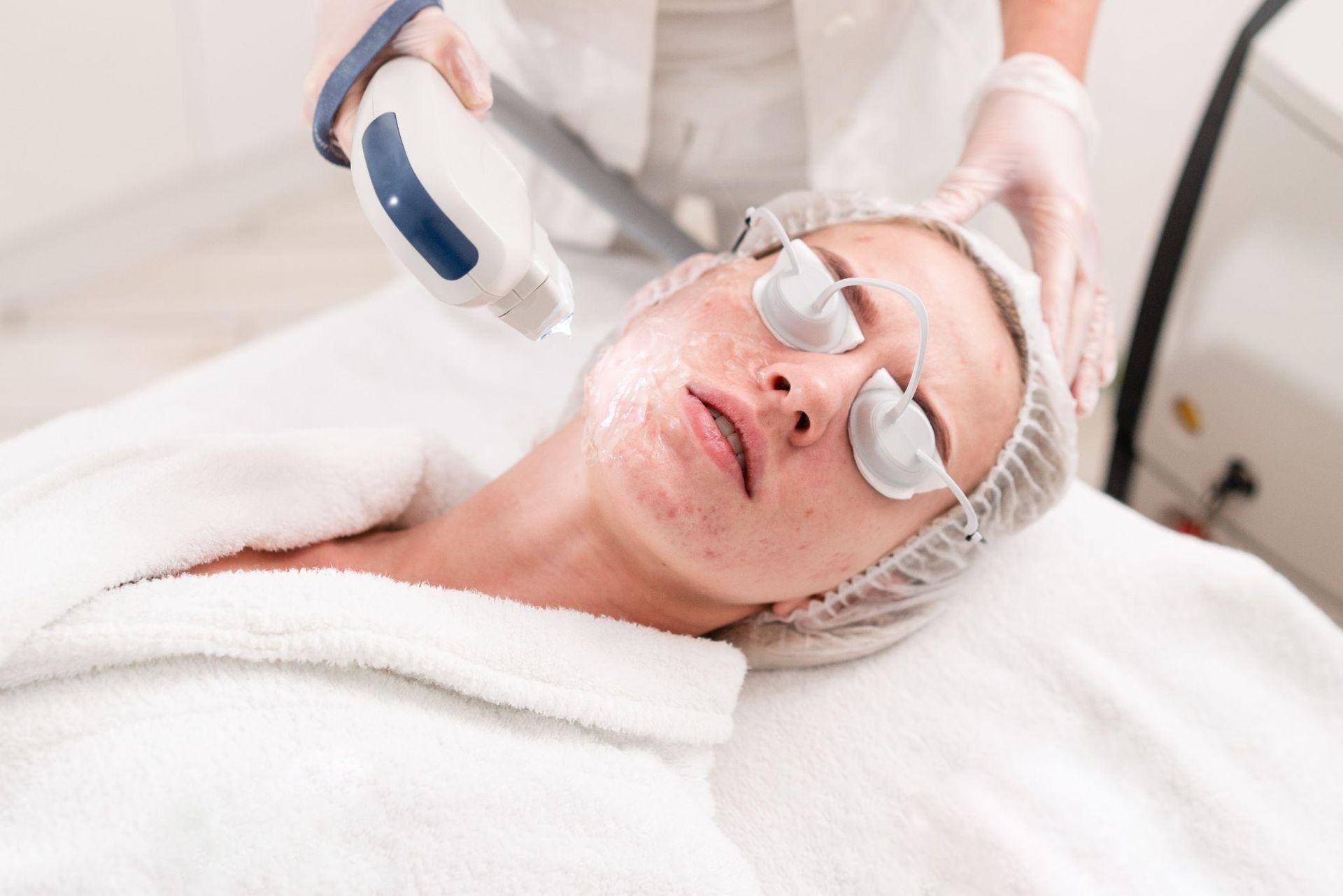
When it comes to treating acne scars, one size doesn’t fit all. That’s why we offer a range of laser options at Michele Finley Cosmetic Medicine. Each is designed to target specific types of scarring and suit different skin needs. Here's what you can expect from our most popular treatments.
Clear + Brilliant Laser
If you’re new to laser treatments or dealing with mild to moderate acne scars, Clear + Brilliant may be the ideal starting point. This non-ablative fractional laser is gentle on the skin and safe for all skin tones. It works by creating thousands of microscopic treatment zones in the top layer of skin, stimulating collagen and encouraging new skin cells to replace damaged tissue.
Clear + Brilliant is especially helpful for managing early signs of scarring or treating acne-prone skin that's beginning to show textural irregularities. While results are gradual, multiple sessions can noticeably improve the appearance of acne scarring without significant downtime.
This laser treatment is also a smart maintenance option after more aggressive procedures. Because it's well-tolerated and has minimal recovery, it fits into a long-term skin care strategy for keeping skin smooth and healthy.
Fraxel Laser
For more defined or stubborn acne scars, such as rolling or boxcar scars, Fraxel is a trusted non-ablative laser treatment. It targets the deeper layers of the skin without damaging the surface. The laser creates controlled columns of heat beneath the skin’s surface, prompting your body to produce new collagen and replace damaged cells over time.
Patients often see a noticeable improvement in skin tone and texture after a few sessions. Fraxel is also highly effective at reducing post-inflammatory hyperpigmentation, which is especially beneficial for patients who have both scars and discoloration from old breakouts.
Recovery is relatively manageable. You might experience mild redness and flaking for a few days, but it’s significantly less invasive than ablative laser options. This balance of effectiveness and comfort makes Fraxel a go-to choice for treating acne scars.
Pearl Fractional Laser
Some scars require a more aggressive approach, especially deeper boxcar or ice pick scars that affect the lower layers of the skin. For these cases, we may recommend Pearl Fractional Laser, an ablative laser designed for deep acne scar treatment.
This laser works by removing columns of scar tissue and triggering robust collagen remodeling in the deeper layers of the skin. It’s powerful, and while recovery takes longer (typically 5 to 7 days) the results can be dramatic.
Pearl Fractional Laser is best for patients who want to address significant skin texture issues in fewer sessions. It's often used when other treatments haven’t delivered the desired results, or when the goal is to reduce deep scars as much as possible in a single treatment plan.
Your Personalized Journey to Smoother Skin
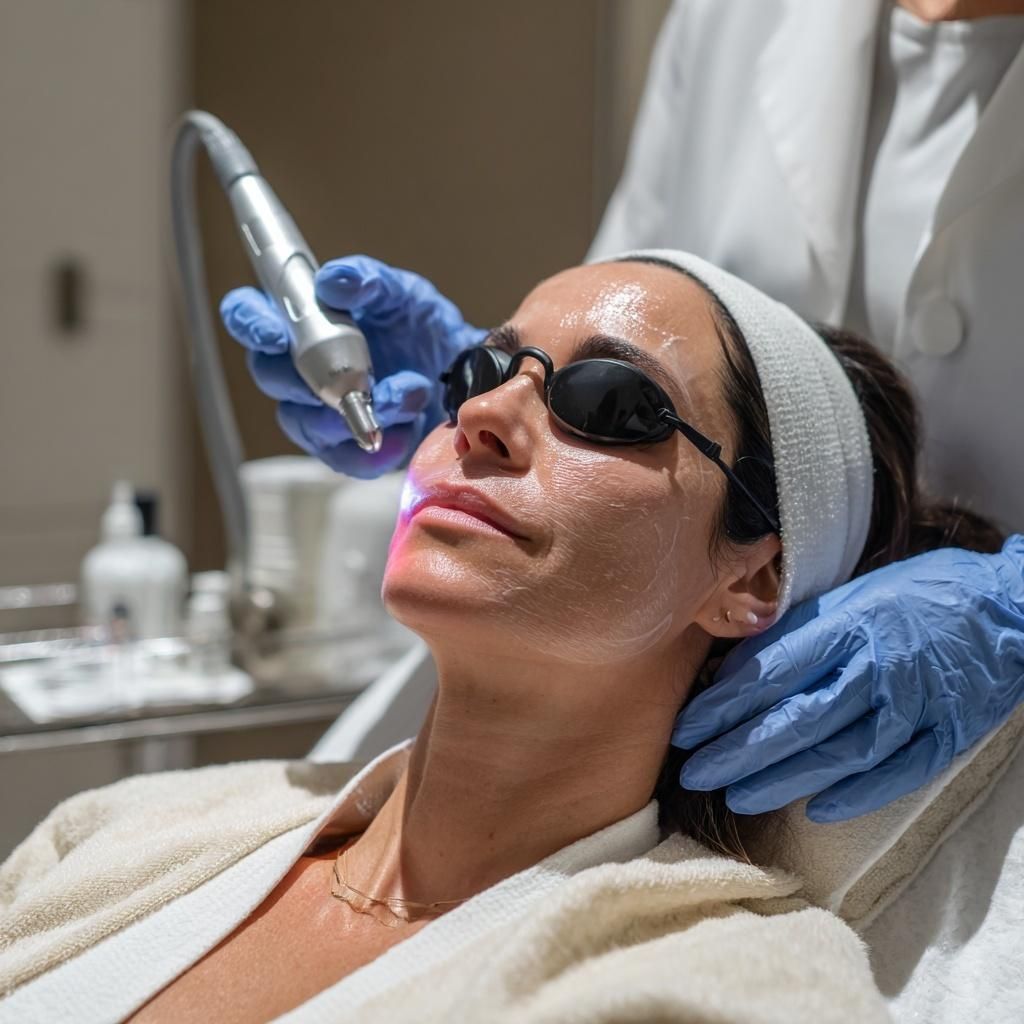
Achieving clear, smooth skin starts with a personalized approach. Before any laser touches your skin, we begin with a thoughtful consultation to understand your unique concerns and create a plan tailored just for you.
What to Expect During Your Consultation
Your skin is unique, and so is your treatment plan. During your consultation at Michele Finley Cosmetic Medicine, we assess your scar type, skin tone, and overall skin health. We also discuss your goals, expectations, and medical history to ensure the safest and most effective treatment.
Dr. Finley and her team will identify whether you’re dealing with atrophic scars, deeper ice pick scars, or raised hypertrophic scars. This scar classification helps determine the right type of laser, number of sessions needed, and whether other treatments should be included in your plan.
We take the time to educate you on how laser treatment works, what kind of results you can expect, and what the healing process involves.
What a Typical Laser Treatment Looks Like
Before your session, you’ll receive pre-treatment instructions such as avoiding sun exposure, stopping certain skin care products, and staying hydrated. On the day of treatment, we’ll apply a topical numbing cream to make the procedure as comfortable as possible.
Depending on the size of the treatment area and the type of laser used, a session can last anywhere from 30 to 90 minutes. Afterward, your skin may look red or feel warm (similar to a sunburn). We’ll provide detailed aftercare instructions to help support healing and reduce any discomfort.
Downtime varies. Clear + Brilliant may only cause mild redness for a day or two, while Pearl Fractional Laser can require up to a week of recovery. We’ll let you know exactly what to expect based on your treatment plan.
Is Laser Acne Scar Treatment Right for You?
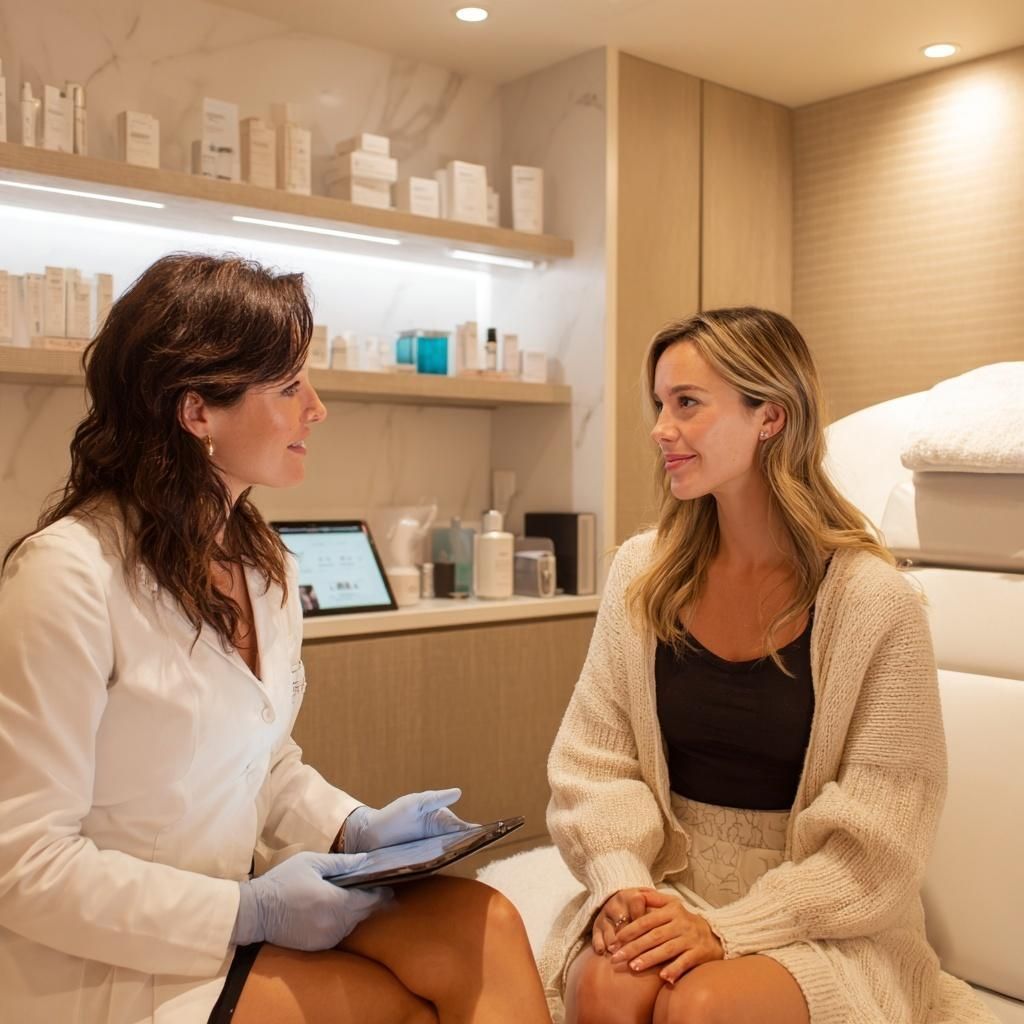
Not everyone is a perfect candidate for laser treatment, and that’s okay. This part of your journey is about understanding what’s safe, what works best for your skin, and when the timing is right to begin.
Can All Skin Tones Be Treated Safely?
Yes, but with the right approach. Darker skin tones (Fitzpatrick types IV–VI) have a higher risk of post-inflammatory hyperpigmentation after laser procedures. That’s why we carefully select laser settings and technologies that are safe and effective for your specific skin tone.
Non-ablative laser treatments like Clear + Brilliant and Fraxel are often preferred for patients with darker skin. Our experience treating a range of skin tones means we know how to minimize risk and still deliver visible results.
Who Should Avoid Laser Treatments?
Laser treatment isn’t right for everyone. If you have active acne, certain autoimmune conditions, are pregnant, or take medications like isotretinoin, we may need to postpone treatment or recommend alternatives.
We’ll review your full medical history during the consultation to ensure safety. Timing is important, and starting with healthy, stable skin gives you the best chance at success.
How Long Until You See Results?
Wondering when you'll see results? Here's what to expect from your treatment timeline.
Number of Sessions and Timeline
Laser acne scar treatment is not a one-and-done fix. Most patients need a series of treatments to see optimal results. The number of sessions depends on your scar type, the laser used, and your skin’s response.
Here’s a general guide:
- Clear + Brilliant: 4–6 sessions for mild acne scarring
- Fraxel: 3–5 sessions for moderate scars
- Pearl Fractional: 1–3 sessions for deep scars
Visible improvements often begin after the second or third treatment, with continued changes over several months as collagen builds.
Combining Laser With Other Scar Treatments
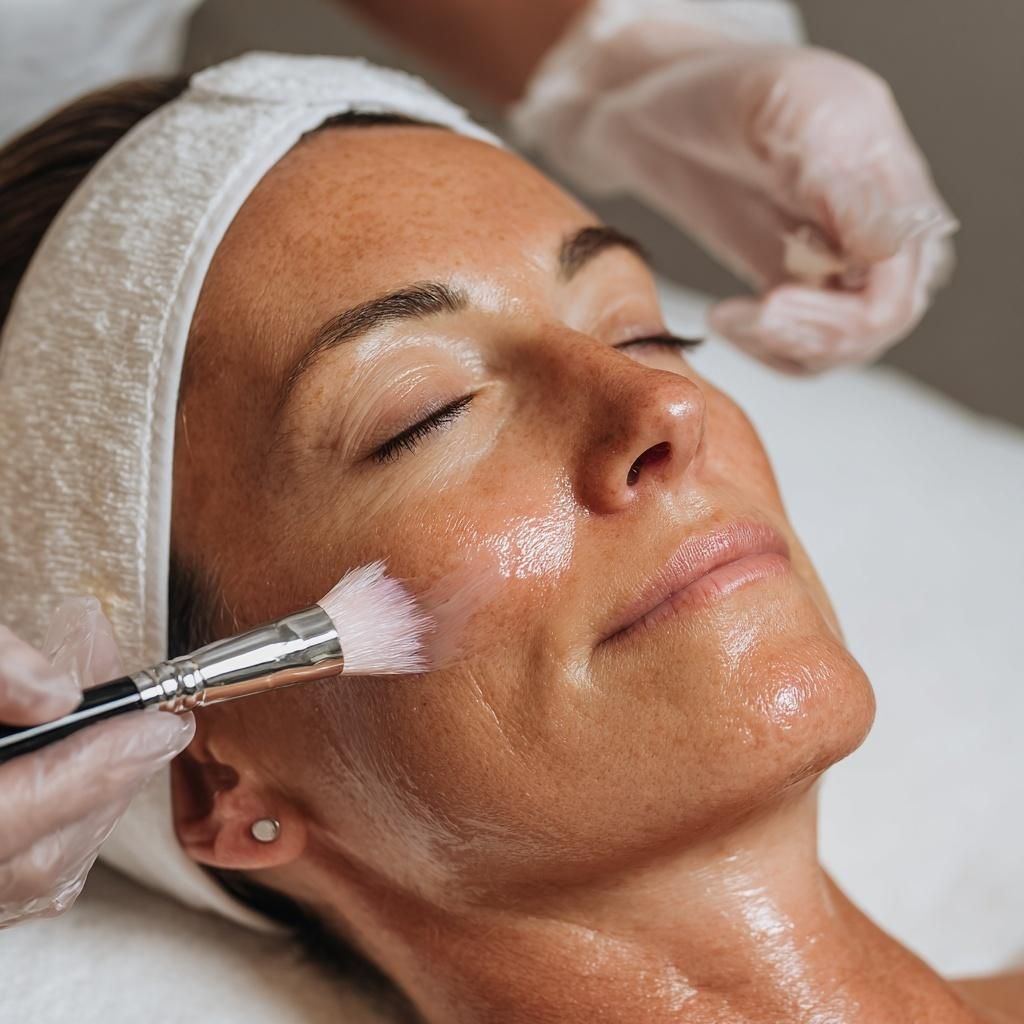
For some patients, the best results come from combining laser therapy with other proven treatments. Here's when it makes sense.
When Combination Therapy Makes Sense
Laser isn’t your only option for treating acne scars. In some cases, combining laser treatment with other procedures can improve results.
These might include:
- Microneedling: stimulates collagen and improves surface texture
- PRP (platelet-rich plasma): enhances healing and skin regeneration
- Chemical peels: addresses surface discoloration and brightens tone
We often recommend combination plans when dealing with multiple scar types or skin concerns.
Home Care to Support Healing
Good skincare is crucial. After laser treatment, we recommend:
- Broad-spectrum SPF to prevent pigmentation
- Gentle cleansers and moisturizers to support barrier repair
- Topicals with retinoids or peptides to enhance results
Dr. Finley provides each patient with product recommendations that complement their treatment and support ongoing results.
Managing Risks and Maximizing Safety
Understanding potential side effects is an important part of preparing for treatment. Here’s what to know so you can feel confident and informed.
What Side Effects Should You Expect?
Like any procedure, laser treatment has risks. Most are minor and temporary:
- Redness and swelling
- Peeling or flaking
- Darkening or lightening of skin (especially in darker skin types)
More serious complications are rare when performed by experienced providers using proper equipment.
Why Experience Matters
At Michele Finley Cosmetic Medicine, your care is in the hands of a physician with over 20 years of experience. Our clinic uses proven protocols, FDA-cleared lasers, and detailed patient education to ensure your safety at every step.
You can trust us to choose the right treatment, the right settings, and the right approach for your unique skin.
Frequently Asked Questions
1. Is laser treatment effective for acne scars?
Yes, laser treatment is one of the most effective options for improving the appearance of acne scars. It works by stimulating collagen, resurfacing damaged skin, and reducing discoloration. According to the American Academy of Dermatology, laser therapy can significantly improve skin texture and tone.
2. Can acne scars be 100% removed?
While laser treatments can make scars much less noticeable, they typically do not remove scars completely. The goal is to improve skin smoothness, reduce discoloration, and make scars blend more naturally with the surrounding skin.
3. How many laser treatments does it take to remove acne scars?
Most patients need between 3–6 sessions, spaced several weeks apart. The number depends on the type of scarring, type of laser, and your skin’s response to treatment.
4. Which laser treatment is best for acne scars?
The best laser depends on your scar type, skin tone, and treatment goals. Pearl Fractional is great for deep scars, Fraxel is ideal for texture and pigment, and Clear + Brilliant works well for mild scarring or maintenance.
Conclusion
Acne scars don’t have to be permanent. With the right laser treatment, tailored to your skin type and scar pattern, you can dramatically improve the look and feel of your skin. Whether you’re just starting to explore your options or you’ve tried other treatments without success, laser therapy at Michele Finley Cosmetic Medicine offers a safe and effective path forward.
Ready to take the next step toward smoother, more confident skin? Schedule your personalized consultation today and let us help you create a treatment plan that delivers real results.

Dr. Michele Finley
Meet Michele Finley, MD, a renowned expert in cosmetic treatments, dedicated to enhancing your beauty and confidence with personalized care and precision.
